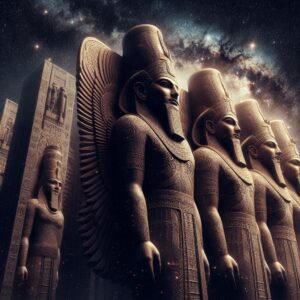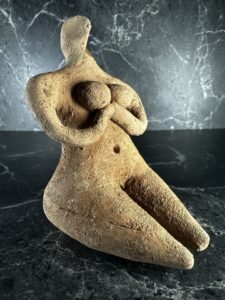 The Nippur tablet
The Nippur tablet
The Nippur tablet, an ancient Sumerian artifact that is believed to hold significant clues regarding early astronomy and the astrological practices of the Sumerians. This tablet has attracted attention due to its potential insights into the early understanding of celestial movements, especially related to the lunar calendar and the observation of stars.
The tablet was discovered in the ancient city of Nippur, located in modern-day Iraq, a key centre of culture and learning in ancient Sumer (circa 3rd millennium BCE). Nippur was home to many important temples and astronomical observatories in the early Mesopotamian world.
The round tablet is thought to be one of the earliest astronomical documents found in Sumer. It is believed to have been used as a lunisolar calendar or an astronomical almanac, tracking celestial events, particularly the cycles of the moon and possibly the movements of the planets and stars.
The tablet is made of clay, and inscribed with cuneiform text. It’s thought to be an astronomical or astrological chart, and may have been part of a larger astronomical tradition in Sumer.
The inscriptions on the tablet seem to reflect an early understanding of celestial bodies, most notably the moon, and their movements. It is thought that the tablet was used for predicting lunar phases, tracking eclipses, or noting the lunar cycles relative to the solar year.
Some experts believe that the tablet was used to track the positions of the stars and planets, with a focus on the five known planets in ancient times: Mercury, Venus, Mars, Jupiter, and Saturn. This reflects a sophisticated level of astronomical knowledge for the period.
The Sumerians were among the first civilizations to systematically observe and record the movements of celestial bodies. Their understanding of astronomy was linked to religious and ritual practices, with many of their gods being associated with celestial bodies.
The tablet is thought to reflect early methods of prediction for events like eclipses and the observation of planetary cycles. The lunar calendar was important for agricultural planning, religious ceremonies, and timekeeping. It’s possible that the tablet was used by priests or astronomers to record celestial observations and forecast important dates.
The Sumerians were known for their use of a lunar calendar that tracked the phases of the moon. The tablet could have been a tool used to align the lunar months with the solar year (lunisolar calendar system). The moon’s cycles were closely tied to rituals and harvests, making this information vital for daily life in Sumer.
The Nippur tablet could have served as a chronological tool for keeping track of important events in the religious calendar, marking the cycles of the moon and the corresponding days for ceremonies and sacrifices.
The round tablet has been studied by scholars of Sumerian astronomy and has led to several key insights:
- Lunar Phases: The tablet appears to show how the Sumerians kept track of lunar phases over time, possibly giving rise to an early form of predictive astronomy.
- Star Clusters and Eclipses: It is suggested that the tablet may also depict specific constellations or eclipses, which were of great significance in Sumerian astrology. The ability to predict solar and lunar eclipses would have been important for religious practices, often associated with divine omens or messages from the gods.
- Planetary Movements: Some experts argue that the tablet may reflect an early understanding of planetary retrograde motion or may have served as an early record of planetary positions in relation to zodiacal signs.
The Sumerians‘ influence on later cultures is also notable. Their astronomical knowledge was passed down to the Babylonians, and ultimately to Greek and Hellenistic astronomers. The Babylonians in particular refined many of the Sumerian astronomical concepts, such as the division of the zodiac into 12 signs and the prediction of eclipses.
Some scholars believe that the Nippur tablet may provide evidence of a continuity between Sumerian and Babylonian astronomical practices, with the Sumerians laying the groundwork for later developments in astrology and astronomical mathematics.
Subscribe to our post updates - Don't miss a thing!!







